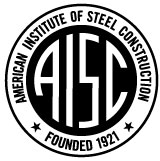We thank the authors for compiling the pitfalls and drawbacks involved with sourcing foreign steel materials and fabrication. We especially note the inherent benefit gained by applying AISC technical documents and AISC Certification to domestically produced steel and domestic fabrication of structural steel. Application of AISC documents and Certification in this manner has a proven track record of safe, efficient and cost-effective project performance.
A case in point: much has been written comparing performance on the San Francisco-Oakland Bay Bridge project in California, which experienced both budget and schedule challenges, with performance on the Tappan Zee project in New York, which beat both the project budget and the project schedule. The Tappan Zee project was domestically sourced and the Bay Bridge was not.
We can add one more relevant consideration to the factors noted in your article: sustainability. The construction literature indicates that the carbon footprint of foreign fabricated steel material can be as much as three times the carbon footprint of domestic fabricated steel material.
So, choosing domestic steel materials and domestic fabrication, combined with application of the AISC technical documents and AISC Certification, not only addresses the challenges pointed out in your article, it also is more sustainable.
Charles J. Carter, S.E., P.E., Ph.D.
President
American Institute of Steel Construction

